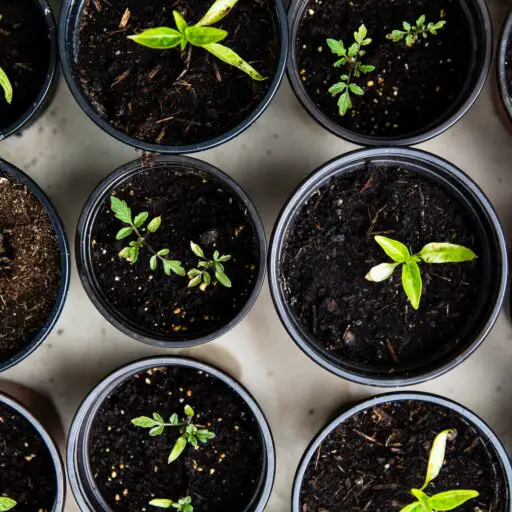Support our educational content for free when you purchase through links on our site. Learn more
Have you ever wondered how a simple plot of land can transform into a bustling hub of community spirit? Community gardens are not just about growing plants; they’re about cultivating relationships and strengthening neighborhoods. But how exactly does this happen? Let’s dig into the roots of this phenomenon and unearth the magic of community gardens.
Table of Contents
- Quick Answer
- Quick Tips and Facts
- The Seed of Togetherness: A Look into Community Garden Origins
- The Social Fertilizer: How Community Gardens Nurture Relationships
- Harvesting Health: The Wellness Benefits of Community Gardens
- Economic Blossoms: Community Gardens and Local Economies
- Educational Sprouts: Learning Opportunities in Community Gardens
- Cultivating Culture: Diversity and Inclusion in Community Gardens
- Green Thumbs and Big Hearts: Volunteering in Community Gardens
- FAQ
- Conclusion
- Recommended Links
- Reference Links
Quick Answer
Community gardens are a green canvas where people from all walks of life come together to create something beautiful and bountiful. They are places where neighbors meet, friendships blossom, and communities thrive. By providing a shared space for gardening, these green havens promote social interaction, improve mental and physical health, offer educational experiences, and even contribute to the local economy. ✅
Quick Tips and Facts
- Did you know? Community gardens can increase property values in the surrounding area by up to 9.4% within five years of establishment. (Source: American Community Gardening Association)
- Tip: Start a community garden in your area by collaborating with local authorities and organizations for support and resources.
- Fact: There are over 18,000 community gardens in the United States alone. (Source: National Gardening Association)
The Seed of Togetherness: A Look into Community Garden Origins
Community gardens have a rich history that dates back to the 1890s, where they began as part of the vacant lot cultivation movement. These gardens were initially established to provide relief to the unemployed who could grow food to feed their families during economic downturns. Today, they serve as vibrant hubs for community engagement and sustainable living.
The Social Fertilizer: How Community Gardens Nurture Relationships
Community gardens are the perfect place for neighbors to connect and collaborate. They offer a shared goal that transcends individual backgrounds, creating a sense of camaraderie and collective achievement. Here’s how they do it:
- Breaking Down Barriers: Gardens provide a neutral ground where people can interact regardless of age, race, or socioeconomic status.
- Shared Learning Experiences: Gardeners exchange knowledge about planting techniques, pest control, and crop rotation, fostering a learning community.
- Community Events: Many gardens host events like potlucks, workshops, and harvest festivals, which become social highlights for the neighborhood.
Harvesting Health: The Wellness Benefits of Community Gardens
Gardening is not just good for the soul; it’s great for the body too. Community gardens encourage healthy eating by providing access to fresh produce, which is especially beneficial in urban food deserts. They also offer a peaceful retreat from the hustle and bustle of city life, reducing stress and promoting mental well-being.
Economic Blossoms: Community Gardens and Local Economies
Community gardens can be a boon to local economies. They stimulate economic growth by:
- Reducing Food Costs: Families save money by growing their own fruits and vegetables.
- Creating Jobs: Gardens can lead to employment opportunities in areas such as garden coordination, education, and local food markets.
- Attracting Tourism: Well-maintained gardens can become tourist attractions, bringing in visitors and revenue to the area.
Educational Sprouts: Learning Opportunities in Community Gardens
From seed to table, community gardens are living classrooms. They offer hands-on education in subjects like biology, ecology, and nutrition. Schools and community groups often use these spaces to teach children about the importance of sustainable agriculture and healthy eating habits.
Cultivating Culture: Diversity and Inclusion in Community Gardens
Community gardens are melting pots of culture. They reflect the diversity of the neighborhoods they serve and provide a space where cultural traditions can be shared and celebrated through the universal language of gardening.
Green Thumbs and Big Hearts: Volunteering in Community Gardens
Volunteering in a community garden is a rewarding way to give back. It’s an opportunity to nurture nature and help maintain these vital community resources. Volunteers can take pride in knowing they’re contributing to the well-being of their community and the environment.
FAQ
What are 3 benefits of a community garden?
- Social Connectivity: They foster relationships and build a sense of community.
- Health and Nutrition: They provide access to fresh, healthy produce and promote physical activity.
- Environmental Impact: They contribute to biodiversity, reduce urban heat islands, and promote sustainability.
How do gardens build community?
Gardens build community by creating common ground for people to meet, work together, and share experiences. They encourage community involvement and collective responsibility for a shared space.
How can you contribute to a community garden?
You can contribute by volunteering your time, donating resources, or sharing your gardening knowledge with others. Every little bit helps in keeping the garden thriving.
How do community gardens help the economy?
Community gardens help the economy by reducing food costs, creating jobs, and potentially attracting tourists. They can also increase property values in the surrounding areas.
Conclusion
Community gardens are more than just plots of land; they are the heart of neighborhoods, bringing together people of all ages and backgrounds. They offer a wealth of benefits, from improving health and well-being to strengthening community bonds and boosting local economies. If you’re looking to sow the seeds of unity in your area, starting or joining a community garden is a fantastic way to do it.
Recommended Links
For more information on the benefits of community gardens, check out our extensive resources:
- Benefits of Community Gardens
- Community Garden Events
- Community Garden Policies
- What Vegetables Are in a Community Garden? 2024
Reference Links
For further reading and verification of the information presented in this article, please visit the following links:
- American Community Gardening Association
- National Gardening Association
- Community Gardens Bring People Together – UnidosUS
Remember, whether you’re a seasoned gardener or a green newbie, there’s a place for you in the community garden. Let’s get our hands dirty and our hearts full as we grow together! 🌱


